In all my travels around France over the past several years, the day I spent in the little UNESCO World Heritage town of Saint-Léonard-de-Noblat ranks among my favorite memories. It’s 30 minutes due east of Limoges, in the 21st-century region of Nouvelle-Aquitaine, but on the day I visited, Saint-Léonard had withdrawn to a time before the modern idea of “France” even existed, far back into its medieval past.
A really authentic medieval faire…
Remarkable things were happening when I arrived. The entire center of the village was closed to cars, and people were streaming in from wherever they could find to park. The narrow medieval streets were alive with visitors – but not only tourists! Everywhere I turned, in the midst of the great crowd, there were street performers and artisans working in the intense summer heat, creating clusters of interested observers that brought foot traffic to a complete halt in places.
This was the annual medieval fair organized by Saint-Léonard-de-Noblat, held for a weekend every August. (The dates have been announced for the 2019 edition – August 17th and 18th – it’s timed to coincide with “Limousin Beef Days”, dedicated to promoting the exceptional meats produced in this corner of France.)
Scenes from the 2014 Fair
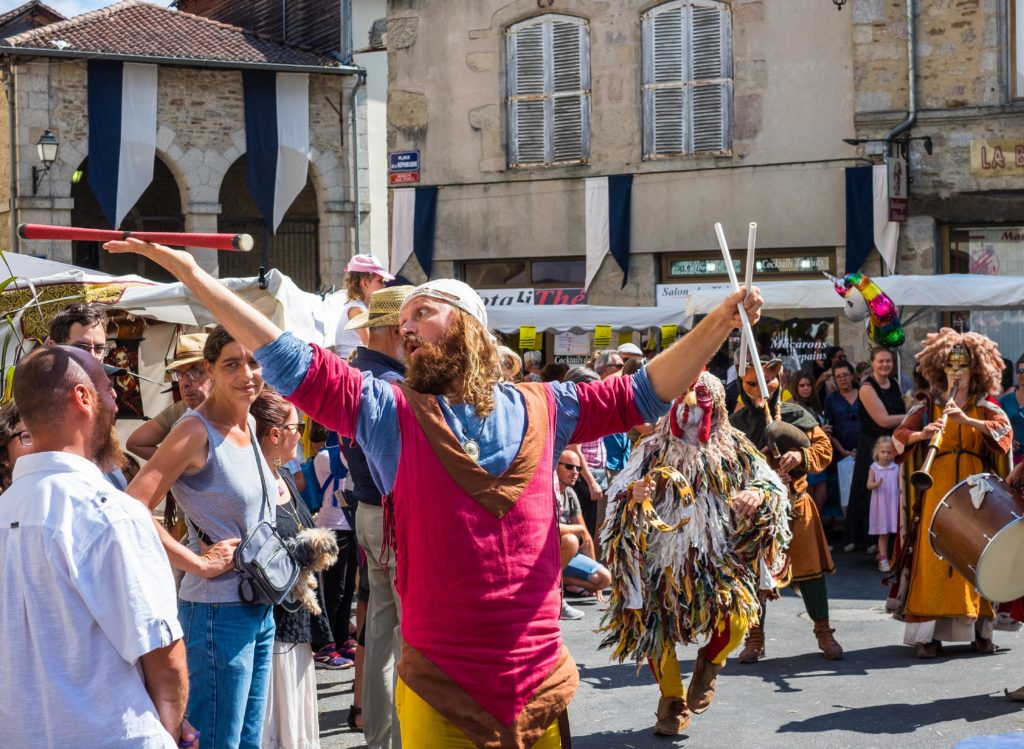
“Les Médiévales”, as the festival is called here, is a rich glimpse into the culture and popular entertainments of the Middle Ages. My favorite performer was a charismatic juggler working with the sticks and cups of a Diabolo as he moved through the crowd, but I also enjoyed watching a group of children learning medieval sword skills. A blacksmith perspired copiously in the blistering heat as he hammered out a new blade. In one area, a bird-master displayed a majestic bald eagle alongside a falcon, an owl, and other birds of prey (all presumably with their wings clipped).
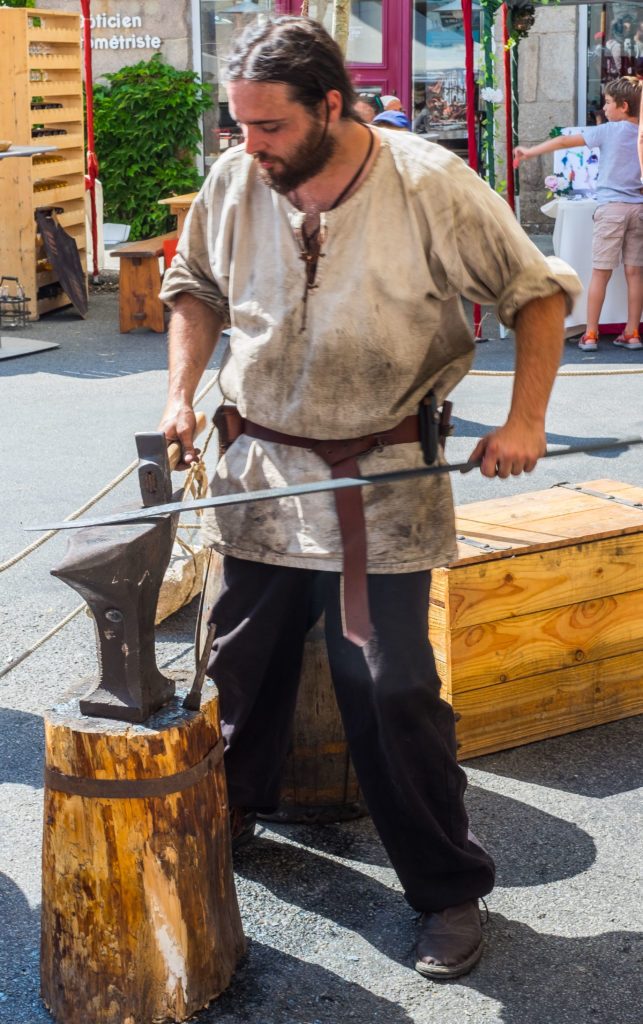
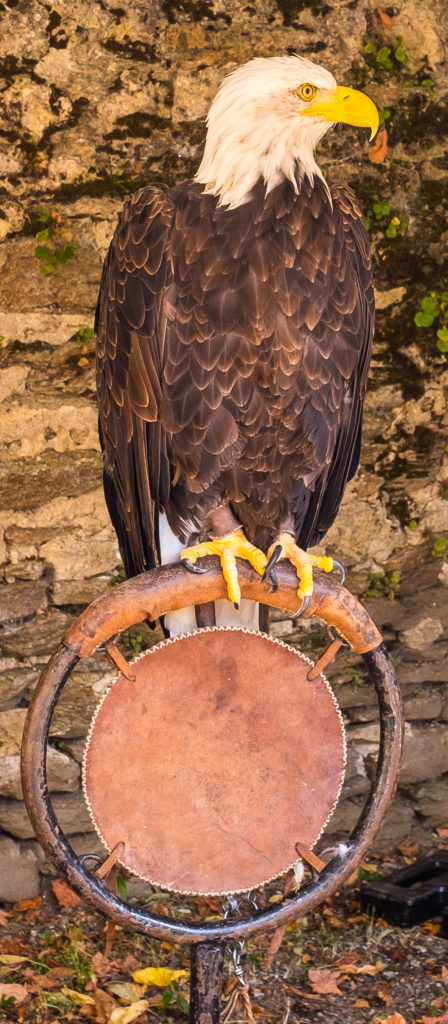
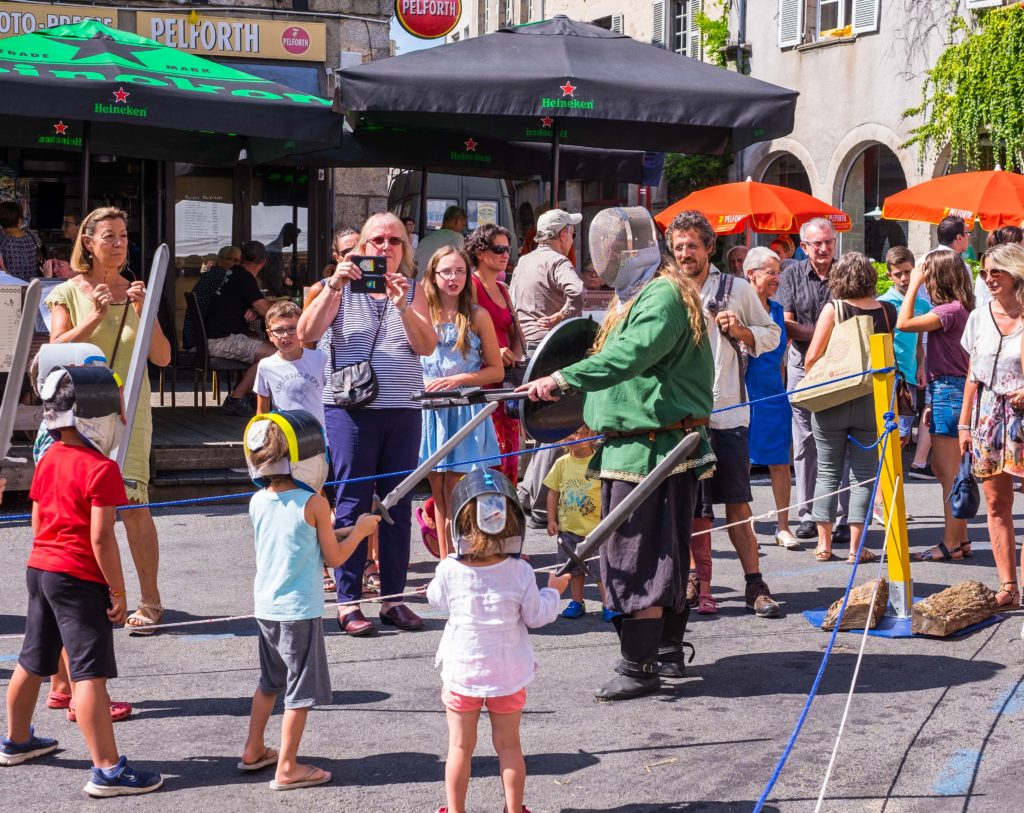
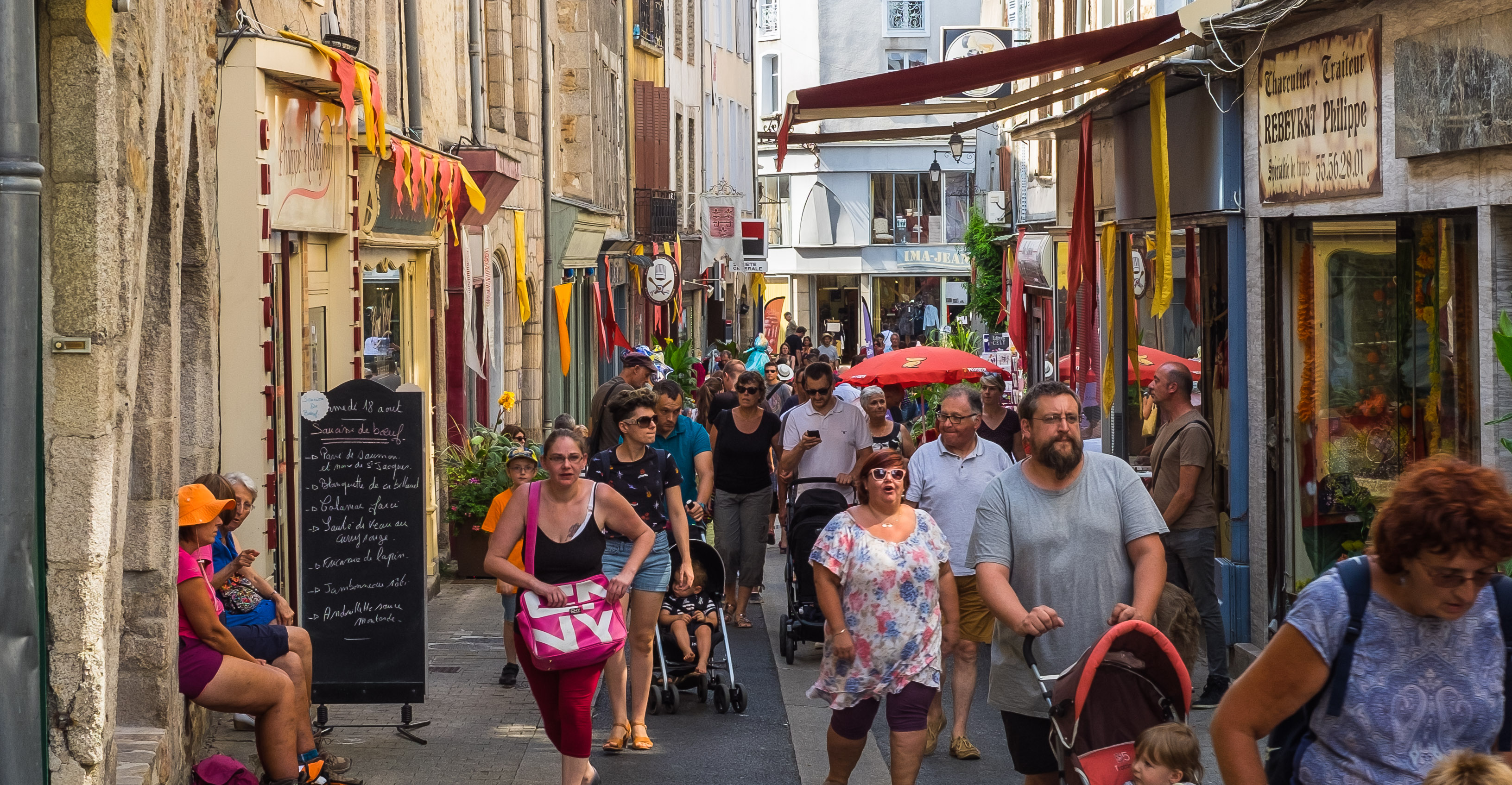
… and an authentic clash in cultures
It’s easy enough to think of France as a “Catholic country” – the evidence is everywhere, from the little church at the center of every French village to the multiple churches and great cathedrals found in larger towns everywhere in the country. And that impression certainly reflects a historical truth about France’s religious history, although since the Revolution it has largely cultivated a self-image as a rigorously secular state.
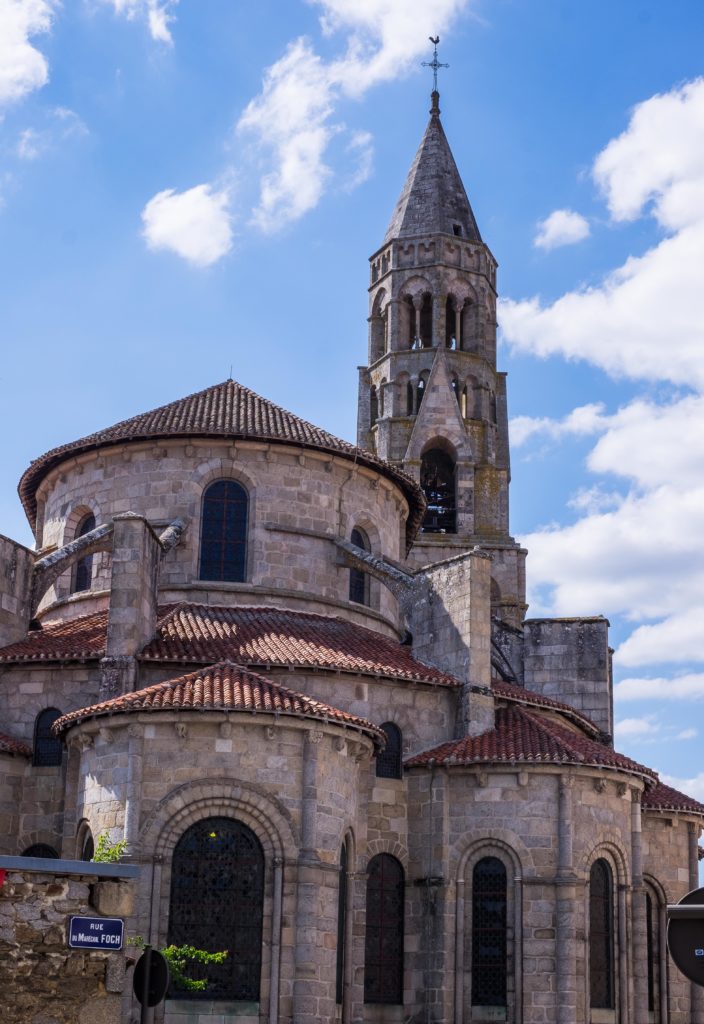
But there has always been a tension between the culture of the Church and popular culture in French history. The most obvious examples come from the French Revolution, when churches were turned into barns for animals and the faces were hacked off many of the sculptures of saints – but the conflict was present back in medieval times, too. Even as the great cathedrals were being raised in Paris, Reims, and Chartres, there were strong elements of anti-clerical behavior in daily life. Even as some of the great orders of monastic life (like the Dominicans and the Franciscans) were established and spread across France, some of the most well-known historical heresies (like those of the Cathars and the Waldensians) sprouted and grew, too.
And that dichotomy was in the air on the day I visited Saint-Léonard-de-Noblat! When I arrived, the church was closed for a private wedding service, so I spent the first hour wandering among the street performers…and you’d have to say that one of the elements of medieval culture they captured best was a fondness for bawdy songs, rude gestures, and pagan symbols. My favorite was the particularly rough (but authentic!) speech delivered by a grizzled man in a great chicken costume, who harangued the crowd at length about two priests looking to spend “quality time” with a lady friend and other subjects better covered in a blog other than this one.
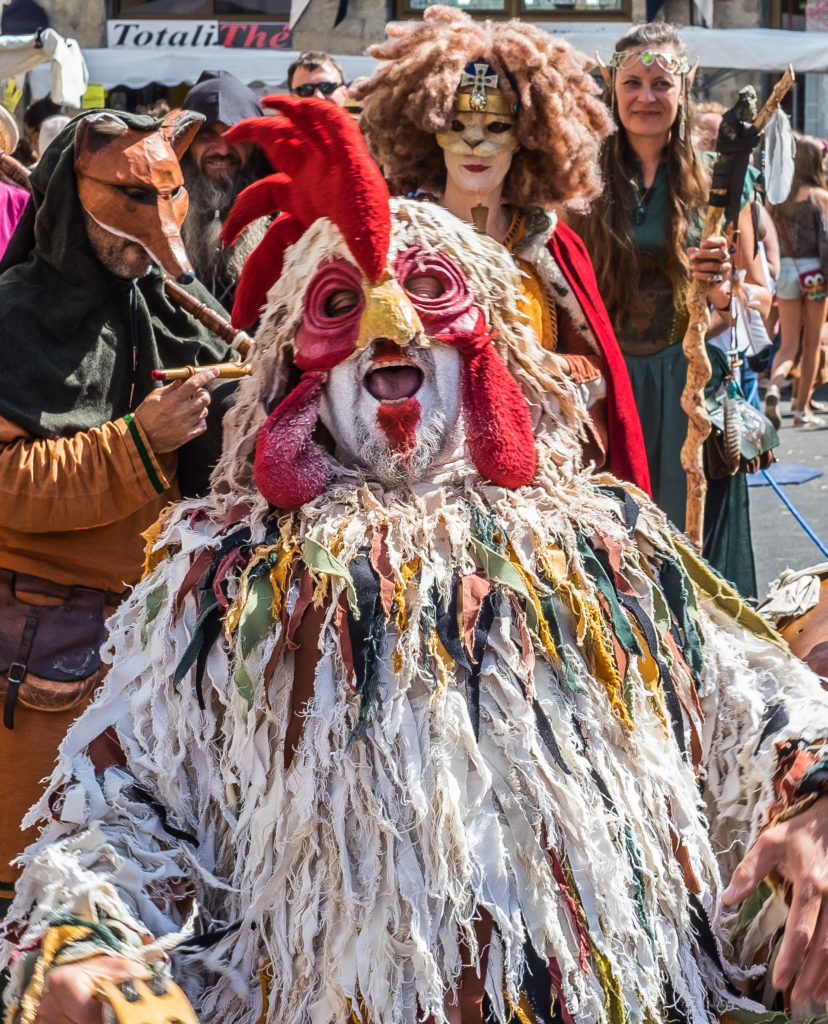
And yet…in the background, even over the boisterous noise in the streets, I could hear something distinctly different: the angelic notes of a choral hymn being sung inside the great church behind us, part of the wedding celebration in progress. It struck me then how long this particular back and forth, between sacred and secular, bawdy and religious, has been going on in this little town. I felt a little frisson as I absorbed the privilege of being present for an experience that has happened her for more than 600 years!
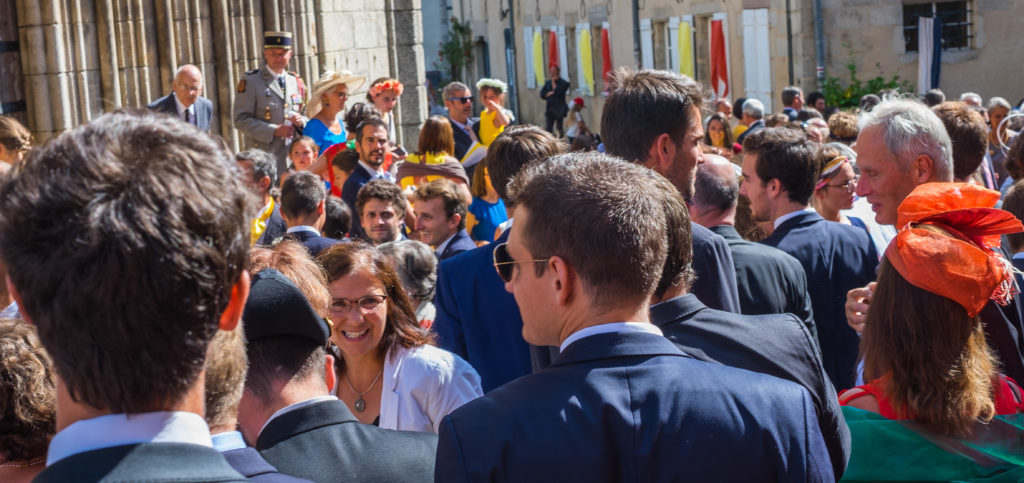
The moment was made even more concrete for me as the wedding ended and the celebrants pushed out into the bigger crowds in the narrow street by the doors of the church. These guests were elegantly dressed, festive even as the summer heat bore into the collars of their navy suits and bright summer dresses; some of the men wore the formal uniform of military officers, and I had a special sympathy for how hot the afternoon must be for them.
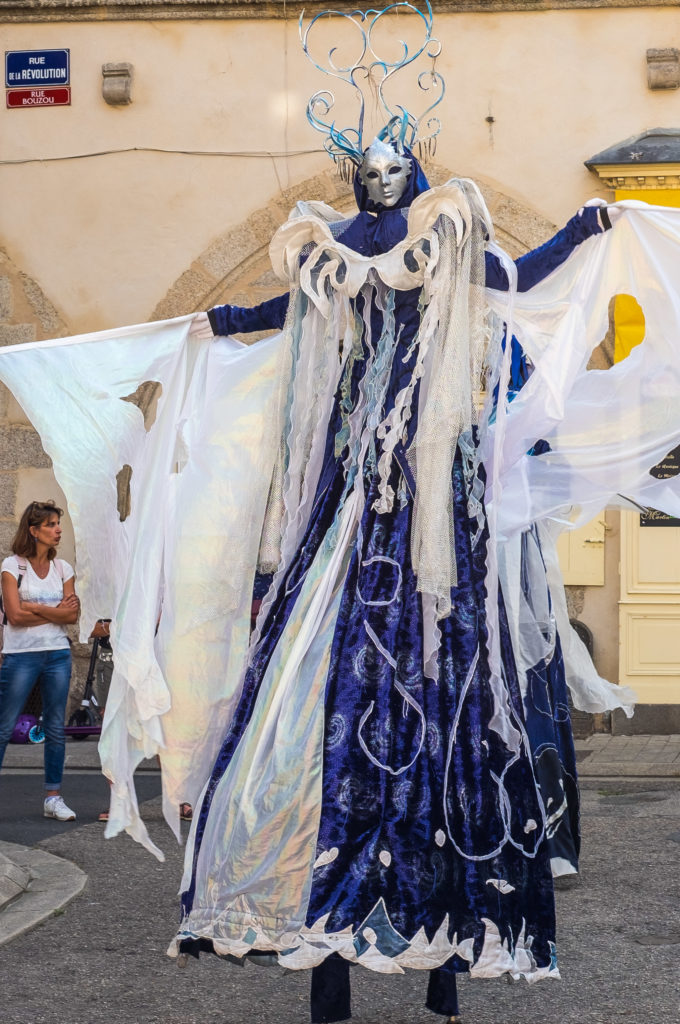
Still, these wedding guests had to part to make way for the passage of the most exotic participants in the medieval festival: a small troop of women on stilts, wearing spooky Venetian masks and rich flowing robes, walking the whole distance across the centre ville and dancing in weird, graceful swoops as they moved through the crowds.
The history of Saint-Léonard-de-Noblat
All this had me wondering about the real history of this fine town – and now that the church was open again, I had a good place to start exploring for myself. The Léonard for whom the place is named was a godson of King Clovis I. Like the King, he converted to Christianity in 496 C.E. According to the legends about him, he asked Clovis to give him the authority to free any prisoner, anytime he felt the person deserved to be liberated. The prisoners freed in this way became the core of his followers, settling in the forests of the Limousin region.
Over the centuries, Léonard became associated with “miracles for the release of prisoners, women in labor and the diseases of cattle,” according to Wikipedia. By the 12th century, his namesake village had built a beautiful big church to house his relics, and Saint-Léonard-de-Noblat became a favored stop for pilgrims on the Way of Saint James of Compostela. For that reason, the town has been called out by UNESCO as a World Heritage Site.
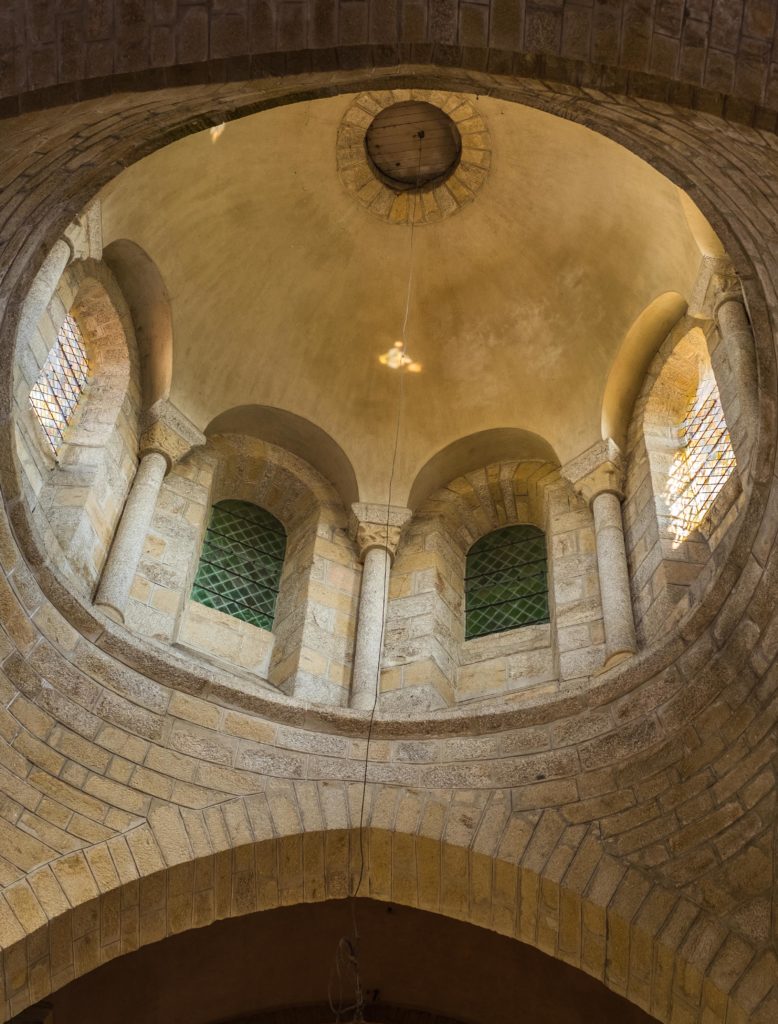
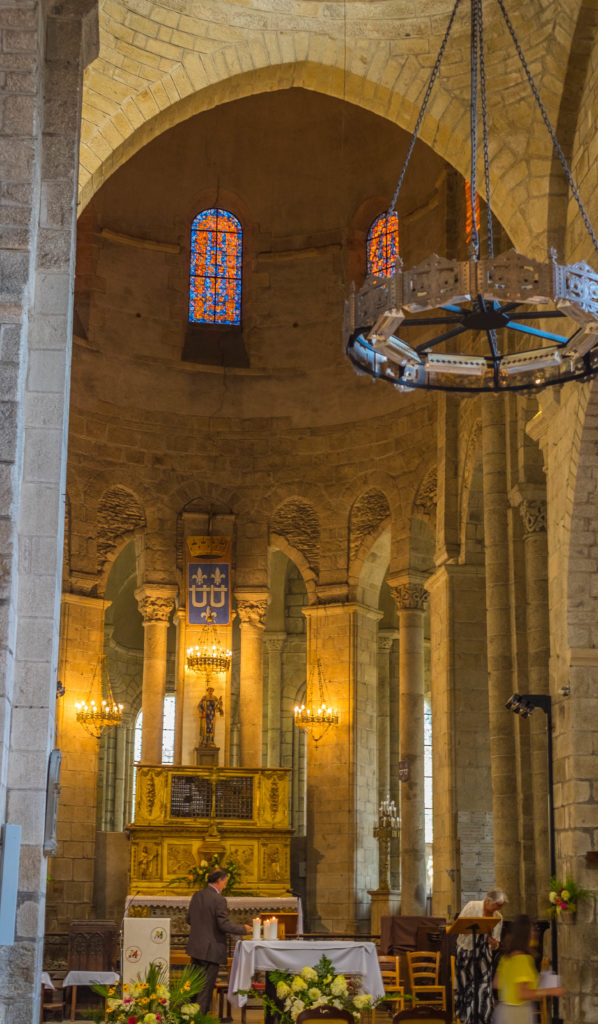
The church itself is a “Collégiale” rather than a “cathedral” or a “basilica”. (As I understand it, that means the congregation is run by a non-monastic group [“cannons” in church parlance] rather than being governed by an on-site group of nuns or priests.) It’s a beautiful example of the Romanesque style so common in this part of France, and its bell tower is spectacular enough to get a 2-star recommendation in the Michelin Green Guide.
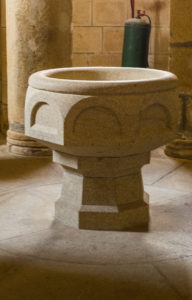
And Léonard is not the only famous person ever to be associated with this small town of 4,400 people. Richard the Lionheart is supposed to have come here to help with construction of the great church; the famous 20th-century singer Serge Gainsbourg reportedly hid out here in 1944 to escape the Nazi persecution of Jews. Saint-Léonard-de-Noblat was also the birthplace (in 1778) of Joseph Louis Gay-Lussac – he’s the extraordinary chemist and physicist who first identified that water is a combination of hydrogen and oxygen, and there’s a local museum dedicated to his scientific legacy.
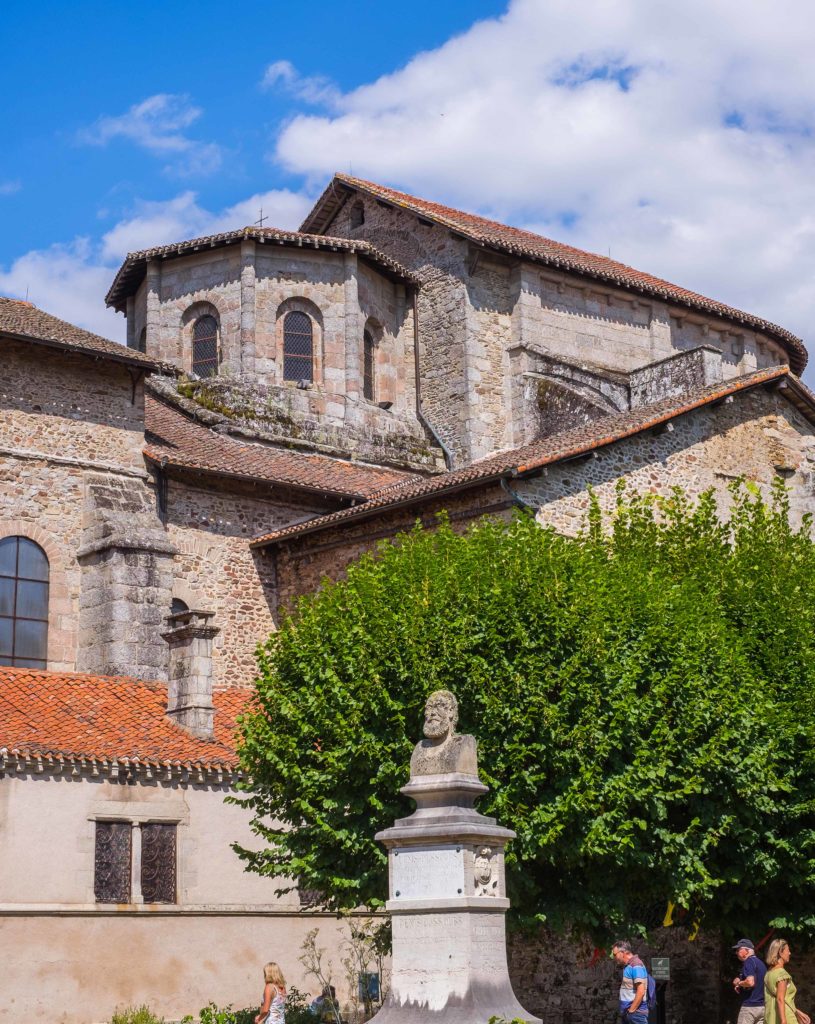
A town with many distinguished specialties
Many of the small towns and villages I visit feature specific arts and crafts they sell as marks of distinction; for the “most beautiful village” of Charroux, it’s exotic mustards and artisanal candles, while for a place like Salers it’s the local Gentiane liqueur, and for Le Puy en Velay it’s fine hand-made lace. But rarely have I found a town that boasts so many different distinctive local products as Saint-Léonard-de-Noblat.
Not too surprisingly given its proximity, it’s on the “Route de Limoges”, and several places around town show remarkable pieces of custom porcelain to rival anything on display in the National Porcelain Museum up the road from here. There are also still some traditional tanneries making leather goods (also logical, since this is the region known around the world for its Limousin cattle), and local paper mills still turn out fine custom products.
While I didn’t buy any of these, I couldn’t resist the more “portable” temptation offered in several local candy shops: massepain, the little oval cookies made here since 1909 from a recipe that supposedly came from religious pilgrims from the Middle East making their way through town. They are super sweet, a little crunchy on the outside but soft on the inside, and the lingering flavor of the almond paste from which they’re made sent me back around the corner to the shop for more!
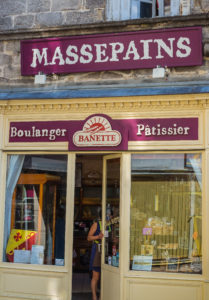
Visiting Saint-Léonard-de-Noblat today
There are plenty of other things to see and do in this area, even if you don’t come for the weekend of “Les Médiévales”. One of the paper mills, the 16th-century Moulin du Got, has been turned into a museum. If you like railroad history, the HistoRail museum has a display this year on how the American army in France had a “decisive impact” on the French railroad system during World War I.
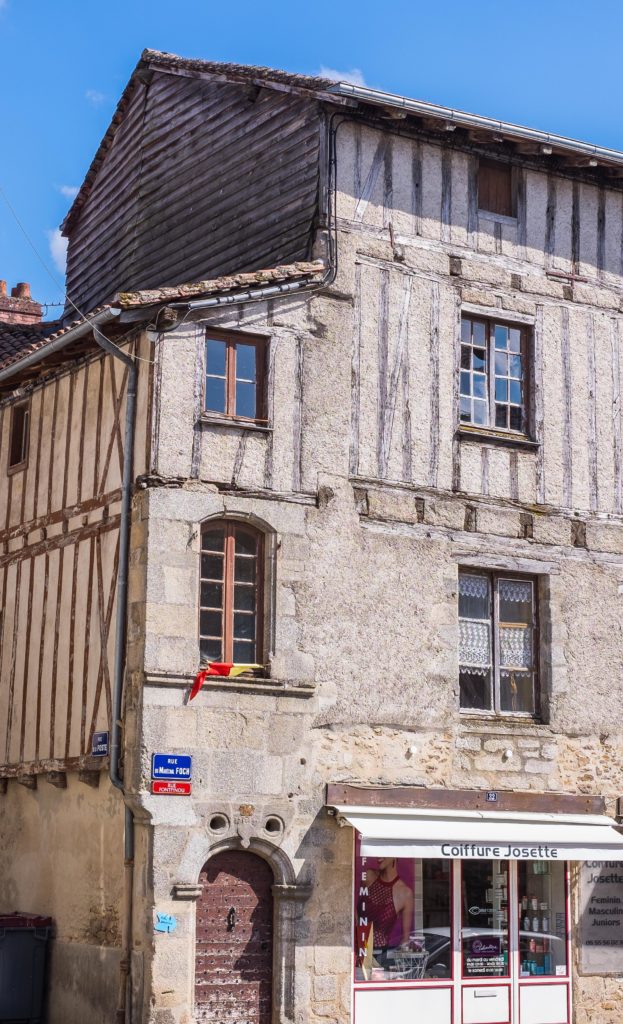
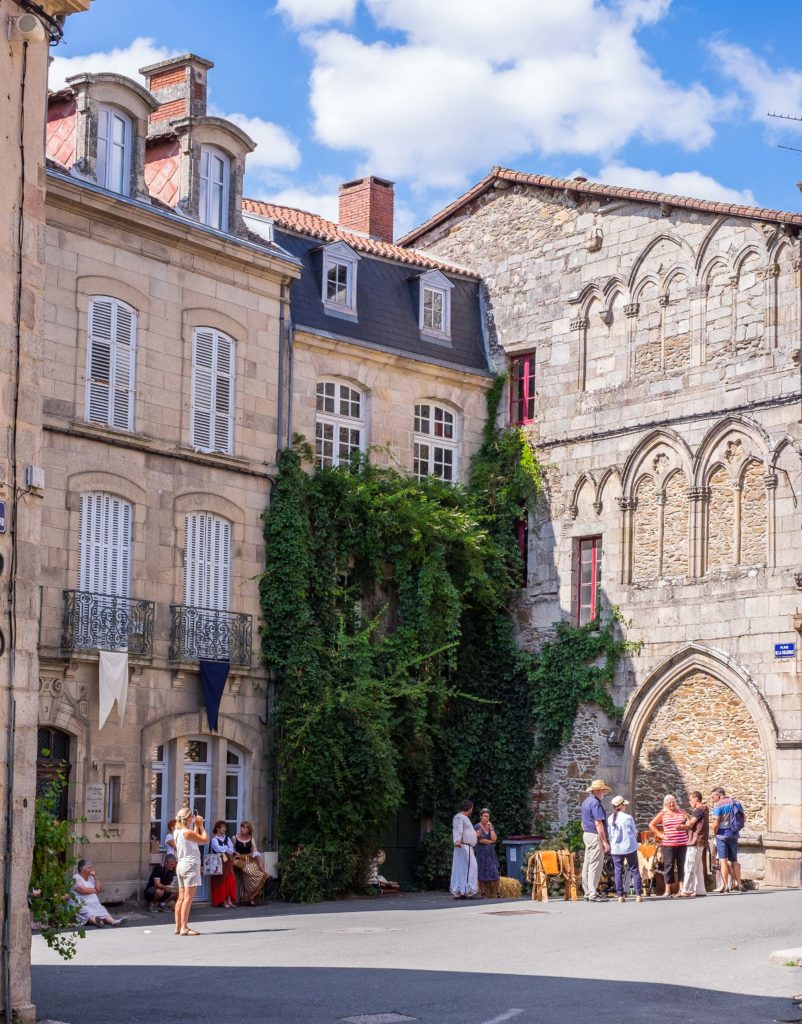
But even if you just come to explore the town, you’ll find a lot to reward your attention in Saint-Léonard-de-Noblat. There’s a reason why it has often been featured as a setting in French television shows and movies – its buildings are authentically Gothic and Romanesque, and the centre ville is a compact reminder of what life must have been like a thousand years ago in this part of France.
My recommendation? Make your base in Limoges, but while you’re there be sure to take the half-hour trip east to see Saint-Léonard-de-Noblat. Do it during the medieval faire in August, if you can (and particularly if you’re traveling with children). And be sure to get a little sack full of massepain to keep you company on the trip back!
Have you found somewhere in France that gives you a particular feeling of “authentic history”? Do you know of any other medieval fairs like the one in Saint-Léonard-de-Noblat? What did you enjoy most about them?
Please share your experience in the comments section below – and please take a second to share this post with someone else who might be interested in the people, places, history, and culture of “the deep heart of France”. Thanks for reading!
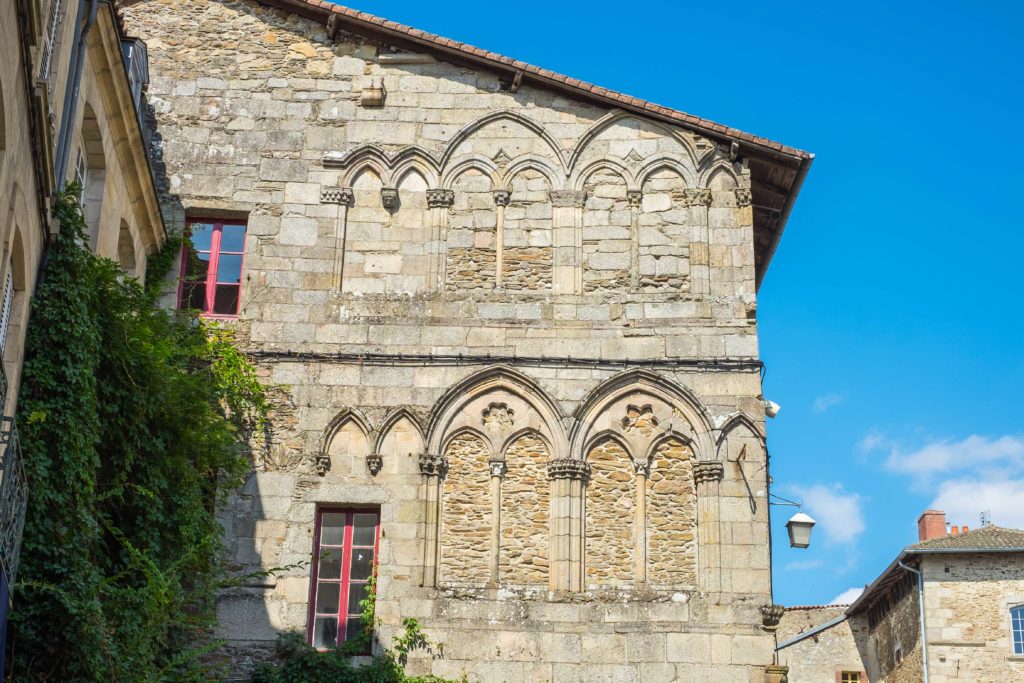
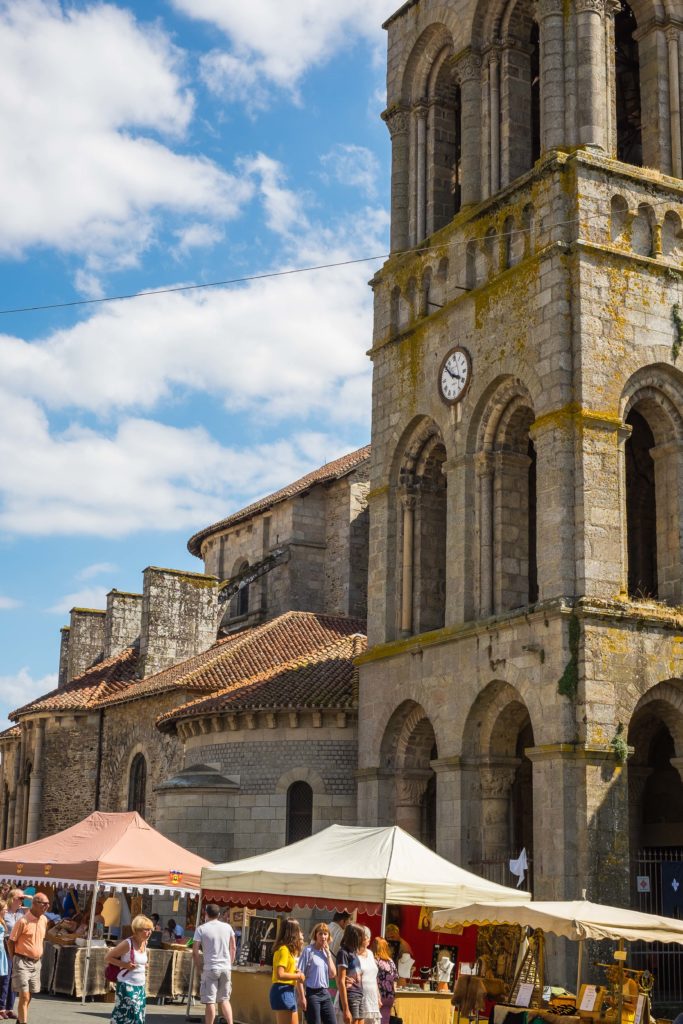
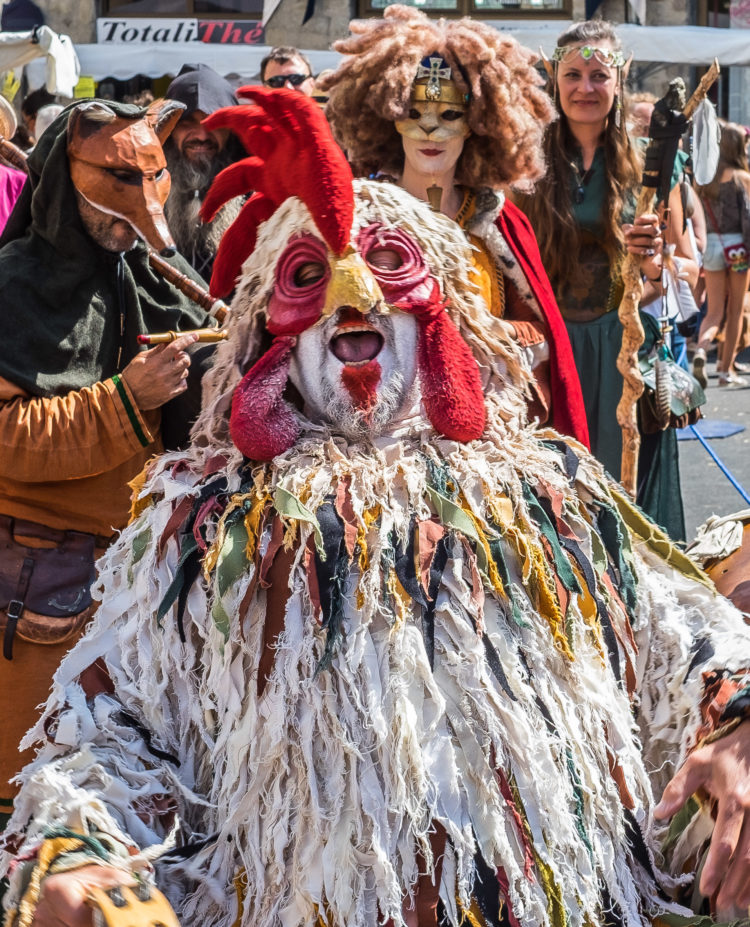

Your Photos are FABULOUS!!! They are wonderful to entice us to visit. I, too, love history and architecture and and trying to learn what I can about France. I will love your “newsletter”. Thank you!
Thank you very much, Allison — glad to have you with us! Please let me know if there’s anything specific you’d like to see covered.